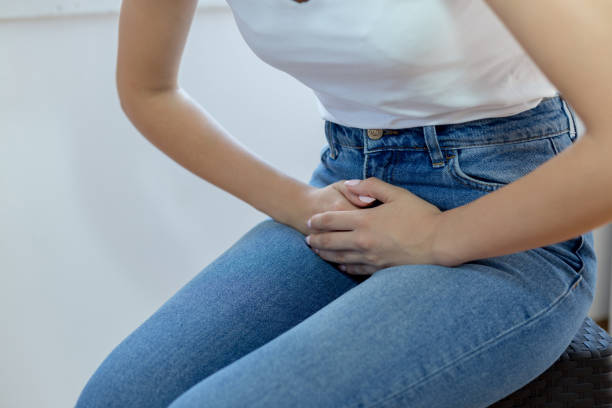Urinary incontinence is a common and embarrassing health issue affecting many people worldwide. The condition causes urine to leak involuntarily from the body. Weakened pelvic floor muscles cause incontinence, and it is a common condition in women who have had multiple childbirths; this is because the pelvic floor muscles can become stretched or weakened over time.
Besides, it can also be due to certain neurological conditions, such as stroke, Parkinson’s disease, multiple sclerosis, and spinal cord injuries. These conditions can interfere with the transmission of signals between the brain and the bladder, causing the bladder to be unable to hold urine or to contract improperly.
Fortunately, there are many ways to manage and even treat urinary incontinence. This article will discuss six of the best ways to eliminate urinary incontinence.
1. Bladder Training
Bladder training is a method used to help individuals reduce or eliminate incontinence. It is a behavior therapy that teaches people how to control their bladder better. The method is helpful to people with both stress and urges incontinence.
Bladder training aims to help individuals better recognize the signs of a full bladder and delay urinating until they can reach a bathroom.
For effective results, you need to set a voiding schedule which means setting a time to use the restroom every few hours. The individual should void at the set times even if they do not feel the urge to urinate. This schedule should gradually increase until the individual can hold their urine for 3-4 hours.
Also, you need to use incontinence pads if necessary to protect your clothes and bedding during the voiding schedule in case of an accident. These pads should be changed regularly and disposed of properly. You can use incontinence pads for bed if you are practicing the schedule during the night. They are comfortable and highly absorbent, making it easy to wear them for a long time without worrying about any leakages.
2. Pelvic Floor Exercises
Pelvic exercises help control urinary incontinence by reducing the frequency of urinary and fecal incontinence frequency. The bladder and rectum are better supported by strengthening the pelvic floor muscles, and leakage is less likely to occur.
Additionally, pelvic exercises can help you gain better control over your bladder and bowel movements, allowing you to go to the bathroom when you need to instead of feeling the urge to go and being unable to hold it.

3. Dietary Changes
Your diet has both a physical and emotional effect on your body. Therefore, it would be best if you were keen on what you consume. Incontinence has several side effects, including an increased number of times you visit the washroom. To manage the condition, you can avoid taking diuretics, food, and beverages that increase your urge to urinate. It would also help to drink a lot of water to ensure you are hydrated and your bowel movements are not affected by incontinence.
Moreover, you should eat lots of fiber to ensure your stool remains regular and prevent the risk of your incontinence from reoccurring. You can consult a nutritionist to help you develop a suitable meal plan to help manage urinary incontinence.

4. Medications
If you have mild incontinence, you should consider getting medications to try and control it. There are different types of medications for the condition, including Anticholigernics. They are the most popular prescribed drugs for individuals who have reoccurring incontinence.
Notably, Anticholinergics ensure your bladder contracts and blocks chemical actions that may cause stress. As a result, individuals will have more control of their bladder movements and not have to worry about accidents. For the drugs to work effectively, you need to get a doctor’s prescription to get a dosage that works for your condition.

5. Surgery
Many people get scared of undergoing surgery, but they are the most effective treatment for several conditions, including incontinence. For patients who have tried different treatment methods but are not getting the desired results, surgery may be an option recommended by the doctor. Since they are different types of surgeries, your doctor will decide on which they think will bring positive results fast. Discussing the potential treatment options with a healthcare professional is essential to determine which surgery is right for you.
Notably, the surgery can reduce the frequency and severity of incontinence symptoms; in some cases, it may even provide a permanent cure. However, the recovery process may take months, requiring you to limit your movements.
6. InterStim Therapy
Interstim therapy is an effective, non-invasive alternative to medical treatment for urinary incontinence. It is a type of physical therapy that focuses on strengthening the muscles and nerves responsible for controlling the bladder and improving awareness of the body’s signals that indicate the need to urinate. It is important to note that Interstim therapy alone may not cure incontinence fully and that it is wise to consult a doctor before beginning any physical therapy.
Conclusion
Urinary incontinence is a health issue that may stress you out, but it can be managed and even treated. You do not have to stay indoors or avoid public gatherings since the six methods listed above effectively eliminate urinary incontinence. It is essential to remember that every individual’s body reacts differently, and what works for one person may not work for another. Discuss your options with your doctor to find the best treatment. It will also help if you research other things you can do to avoid getting urinary continence.
